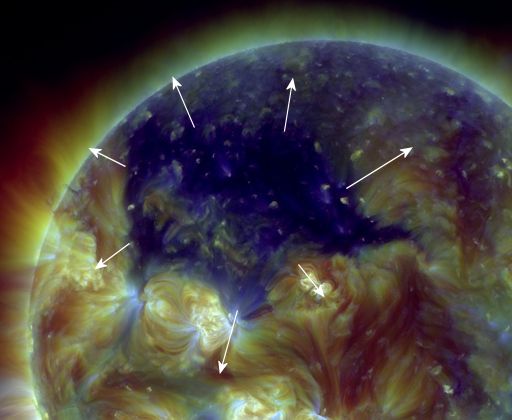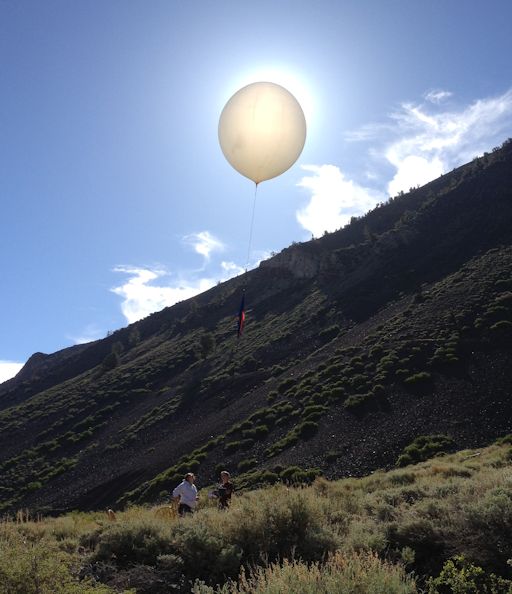When is the best time to see auroras? Where is the best place to go? And how do you photograph them? These questions and more are answered in a new book, Northern Lights - a Guide, by Pal Brekke & Fredrik Broms. | | |
EARTH THROUGH THE RINGS OF SATURN: One month from now, on July 19th, NASA's Cassini spacecraft will photograph Earth from Saturn. The unprecedented image will show the "Pale Blue Dot" in natural color, as it would appear to the human eye, framed by the rings of another world. Get the full story from Science@NASA.
CORONAL HOLE: A large "coronal hole" has formed in the atmosphere above the sun's northern hemisphere, and it is spewing solar wind into space. NASA's Solar Dynamics Observatory took this picture of the UV-dark gap during the early hours of June 19th:

Coronal holes are places where the sun's magnetic field opens up and allows the solar wind to escape. A wide stream of plasma flowing from this particular coronal hole will reach Earth, and brush against our planet's magnetic field, on June 23-24. High-latitude sky watchers should be alert for auroras on those dates. Aurora alerts: text, voice.
Realtime Space Weather Photo Gallery
SPACE WEATHER BALLOON LAUNCH: On June14th high school students in Bishop, California, launched their seventh "space weather balloon." Its mission: To investigate the effect of solar flares and radiation storms on Earth's ozone layer. The group's mentor, Dr. Tony Phillips, photographed the balloon moments before liftoff from their "Edge of Space Port" in the Sierra Nevada mountains:

The balloon's payload carried two cameras, an ozone sensor, a cryogenic thermometer, and a GPS altimeter to an altitude of 110,000 feet above Earth's surface. All of the payload's core space weather instrumentation was built by the students themselves. After the balloon popped, as planned, the payload parachuted back to Earth, landing near the ancient Bristlecone Pine Forest in California's White Mountains. A recovery team has already retrieved the payload, and students are inspecting the data now.
The students launched the balloon on June 14th, a period of low solar activity, because they wanted to compare quiet sun data with a similar data set they collected on May 22nd during a strong solar radiation storm. Stay tuned for their results!
Sponsor a space weather balloon: Would you like to sponsor a flight? The students, who call themselves Earth to Sky Calculus, offer a service for sponsors called "Edge of Space Advertising." During the "ozone flight" on June 14th they flew an ad for Interpret America (flight photo), which paid for the helium in the balloon. The students have also flown banners, cards, cows, running shoes, presidents and other items. If there's something you'd like to fly, please contact Dr. Tony Phillips for rates and details.
Realtime Noctilucent Cloud Photo Gallery
[previous years: 2003, 2004, 2005, 2006, 2007, 2008, 2009, 2011]
Realtime Aurora Photo Gallery
Realtime Comet Photo Gallery

